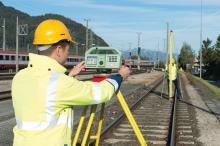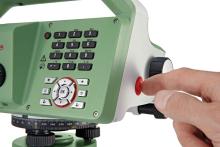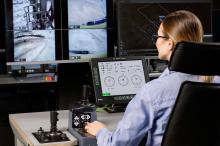
Installation of an automated monitoring system at Marmor Sezana's Lipica II Quarry in Slovenia has helped improve safety
Ensuring the safety of access routes to quarries is essential to protect not just employees and equipment but also ongoing productivity. Monitoring equipment can play a key role in tracking rock stability and remotely operated systems are allowing round the clock checks to be carried out.
With a steep-sided 60m deep quarry providing the only access to the underground mine at
The terrain around the quarry is compacted with a lot of cracks. There are also numerous caves and caverns. The region also experiences freezing temperatures and high rainfall, which to ensure the long-term safety of mine employees, equipment and surrounding infrastructure the quarry operators began investigating monitoring systems.
The site needed a system that could perform automatic and autonomous operation to providing results 24 hours a day, seven days a week; react on movements without an operator; allow access to monitoring data from anywhere in the world; and determine the correlations between movements and other effects on the site such as, temperature, blasting and quakes.
Three monitoring points were established around the quarry perimeter by
After just three months of using the continuous monitoring system the single frequency GPS receivers were detecting movements at the millimetre level. Monitoring points one and three were determined to be stable, however point two had moved 7mm.
The decision was made to remove the monitoring point and blast the area away to create a smoother rock surface. The rock had been completely separated from the slope, with only a small section at the base connected to the rock wall and the monitoring system ensured that the high movement area was located and removed.
According to Marmor Sezana, the detection of this movement validated the mine operator's decision to invest in the system. The safety of the workers and equipment was ensured and there were considerable cost savings.
The quarry operator estimated that a one off investigation into the rock face would cost at least 20% of the initial set up cost of the complete monitoring system. The complete system on the other hand monitors three points continuously, it will operate for many years to come and will provide a long term history of all movements at the quarry.











